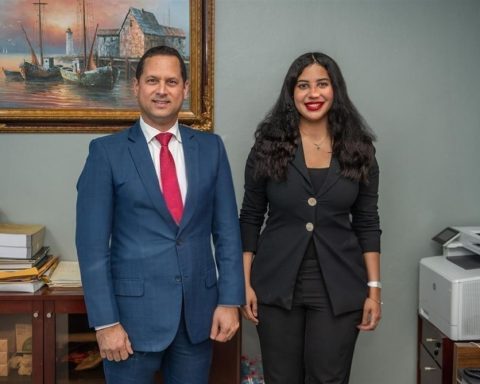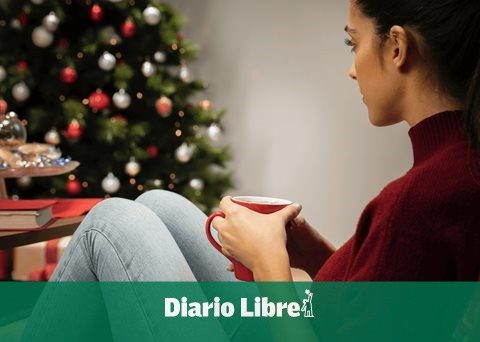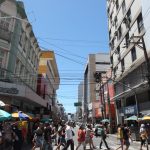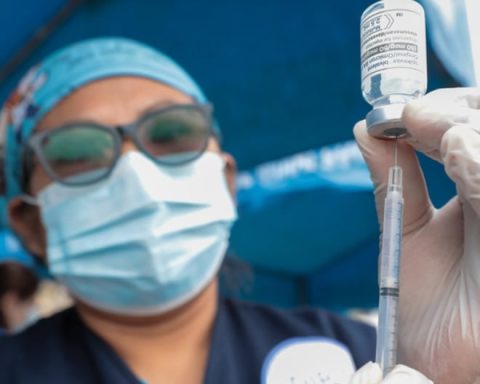The Central Bank of the Dominican Republic (BCRD), at its monetary policy meeting in October 2022, decided to increase its monetary policy interest rate (MPR) by 25 basis points, from 8.25% to 8.50% per year. In this way, the rate of the permanent liquidity expansion facility (1-day Repos) increases from 8.75% to 9.00% per year and the interest-bearing deposit rate (Overnight) from 7.75% to 8.00% per year.
This decision is based on an exhaustive evaluation of the recent behavior of the economy, especially the evolution of inflationary pressures. In relation to external factors, there has recently been a moderation in the prices of raw materials, particularly oil and food; as well as in the costs of container transport at a global level. On the other hand, domestic inflation has been influenced by the second-round effects of these external components and by internal demand pressures, to the extent that the momentum of economic activity is maintained.
Read: “I wish he would come to the PRM”, Ramón Alburquerque’s wish on José Laluz
In this context, the monthly variation of the consumer price index (CPI) was 0.29% in September, after a variation of 0.21% in August, significantly lower than the monthly average of the last 12 months. In this way, year-on-year inflation maintains its moderation, falling by around 100 basis points, from a maximum of 9.64% in April to 8.63% in September. Likewise, interannual core inflation, which excludes the most volatile components of the basket, begins to show signs of moderation, going from 7.29% in May to 7.04% in September, taking into account that this variable tends to react with a greater lag to monetary policy measures.
Due to the timely start of the process of increases to the MPR in November of last year, the monetary policy transmission mechanisms have been operating effectively, so year-on-year inflation is expected to continue decelerating in the coming months. Indeed, with this increase of 25 basic points and under current economic forecasts, the reference interest rate has reached the appropriate level for inflation to converge to the target range of 4% ± 1% before the end of the second quarter of the year. next year.
In effect, the restrictive monetary measures, together with lower inflation expectations, have contributed to the fact that the real interbank interest rate is approximately one percentage point above its estimated neutral level. Likewise, a favorable differential with respect to interest rates in advanced economies has been maintained, contributing to capital flows. In turn, there is evidence of a significant slowdown in monetary aggregates and an increase in the interest rates of commercial banks, mainly in deposits.
In today’s complex landscape, risks remain high. In this sense, the BCRD will be permanently monitoring external financial conditions and the expectations of economic agents, in case it is necessary to take additional measures to preserve price stability.
You could read: “Responsible for the overflow of the Dominican-Haitian crisis is Abinader”, says Yván Lorenzo
In the international environment, geopolitical tensions have caused a deterioration in global economic projections. In that order, in its most recent report of the World Economic Outlook, the International Monetary Fund (IMF) forecasts global growth for the current year 2022 of 3.2%, while the outlook for world inflation remains high.
In the United States of America, our main trading partner, year-over-year growth stood at 1.8% in the third quarter, equivalent to an annualized quarter-on-quarter expansion of 2.6%, after contracting during the first two quarters of the year, easing concerns that The US economy is currently in a recession. On the other hand, year-on-year inflation is beginning to moderate, going from 9.1% in June to 8.2% in September, although it still remains well above its target of 2.0%. In this context, the Federal Reserve has increased its reference rate by 300 basis points this year and another increase of 75 basis points is expected at its next meeting on November 2.
As for the Euro Zone, economic conditions are being affected by the war between Russia and Ukraine; projecting a growth of 3.1% for 2022, while inflation increased to 10.7% in October, the highest since the creation of this block of countries. Against this background, the European Central Bank increased its MPR by 75 basis points in October, accumulating an increase of 200 basis points in the year. For their next meeting, analysts weigh another increase of 75 basis points in the reference interest rate as very likely.
In Latin America, almost all central banks have increased their monetary policy rates placing them significantly above pre-pandemic levels, as is the case in Argentina (reference rate at 75.00 %.), Brazil (13.75%), Chile (11.25%), Colombia (11.00%), Uruguay (10.75%), Mexico (9.25%), Costa Rica (9.00%), Paraguay (8.50%), Dominican Rep. (8.50%), Peru (7.00%), Nicaragua (6.00%) and Guatemala (3.00%). As a result of these restrictive measures, regional inflation has presented signs of moderation, evidenced by more gradual increases in reference interest rates.
In the domestic environment, the economy maintains its momentum, expanding cumulatively by 5.4% during the first nine months of this year. The projectionsEconomic growth rates for the end of 2022 are between 5.0% – 5.5%, close to its potential and one of the highest expansions among the economies of the region. As a reflection of the dynamism of domestic demand, private credit in national currency is growing more than 14% year-on-year at the end of October, mainly influenced by loans to households.
Regarding fiscal policy, the higher collections stand out in relation to what was estimated, which has given the necessary space to apply subsidies aimed at mitigating the adverse impact of higher prices of raw materials; as well as for assistance to the affected provinces due to the passage of Hurricane Fiona.
You can read: “Abel Martínez shows signs that he is serious about competing for the presidency”, says Martínez Pozo
On the other hand, there has been an accumulated appreciation of the exchange rate of approximately 6.0% as of October, as a result of the dynamism of the activities that generate foreign currency (tourism, exports, remittances and foreign direct investment) and the greater capital inflows. This scenario has contributed to international reserves remain high, standing at around US$13.5 billion in October, equivalent to more than 12% of GDP and about six months of importsexceeding the metrics recommended by the IMF.
It highlights that the Dominican economy is in a good position to continue facing the challenging international panorama, taking into accountThe strength of the macroeconomic fundamentals and the resilience of the productive sectors are noteworthy. The Central Bank of the The Dominican Republic reaffirms its commitment to drive monetary policy towards the achievement of its inflation target and the proper functioning of the financial and payment systems.
















